Art can be used in health profession education to express the social determinants of health and other important topics visually, providing an additional way of understanding the complex factors affecting health.
Abstract
This article presents the outcomes of an Art and Social Justice Fellowship project focused on using art in a course for doctoral nursing students to depict social determinants of health. Emory University faculty and Atlanta-based artists can apply each year for this fellowship. This project, conducted during the 2022-23 academic year, provided a platform for expressing and understanding the social determinants of health through art and highlighted the potential for using this integrated approach across health profession education. Each participating student developed a magazine cover to visually represent the social determinants of health related to a specific disease process based on an extensive review of existing literature. The project aimed to enhance interprofessional collaboration, foster creativity, and deepen the understanding of the complex factors influencing health outcomes.
Introduction
In recent years, there has been a growing recognition of the profound impact of social determinants of health on individuals and communities (Baah et al., 2019). Therefore, it is crucial for healthcare professionals to understand and address these determinants to promote equitable healthcare outcomes. Traditional didactic teaching methods often fail to adequately convey the complexities of social determinants of health (Hamilton et al., 2023; Nicolle et al., 2014). This article introduces an innovative approach that integrates art and doctoral nursing education to engage and empower students in exploring, understanding, and visualizing the social determinants of health.
Methodology
The Art and Social Justice Fellowship project was conducted with doctoral nursing students and aimed to depict social determinants of health for specific health conditions using artistic expressions. The project was guided using Nell Hodson Woodruff School of Nursing (NHWSN) Social Determinants of Health (SDOH) Four Pillar Framework (Hamilton, 2023) and the American Association for Colleges of Nursing (AACN) Essentials within a Social Determinants of Health Lens (AACN, 2021; Hamilton, 2023).The students engaged in an extensive literature review to gain a comprehensive understanding of social determinants of health and their impact on populations affected by various health conditions. Next, each student selected a specific health condition and developed a magazine cover depicting the social determinants of health related to it. The students received guidance from an experienced nursing faculty member and a working artist. Participants engaged in a series of workshops, discussions, and artistic activities to deepen their understanding of social determinants of health and their impact on health conditions. The Art and Social Justice Fellowship project involved five doctoral nursing students from diverse backgrounds.
RESULTS
Through this project, doctoral nursing students produced a collection of thought-provoking artworks that vividly captured various social determinants of health and their influence on specific health conditions. These powerful visual representations allowed students to articulate the complexities of social determinants and fostered critical thinking, empathy, and a deeper understanding of the structural factors that contribute to health inequalities. The resulting magazine covers visually portrayed the intricate interplay of social determinants of health and health outcomes for specific populations affected by the chosen health condition. Magazine covers included the following: Brainy Magazine, Mindfulness Magazine, The Mayn NP Magazine, Digital Literacy, and Geriatric Transitions, displayed in Graphics 1-5. The magazine covers were not published within a magazine; however, they were displayed at the Art and Justice Fellowship Showcase in Atlanta, GA on December 5, 2023.
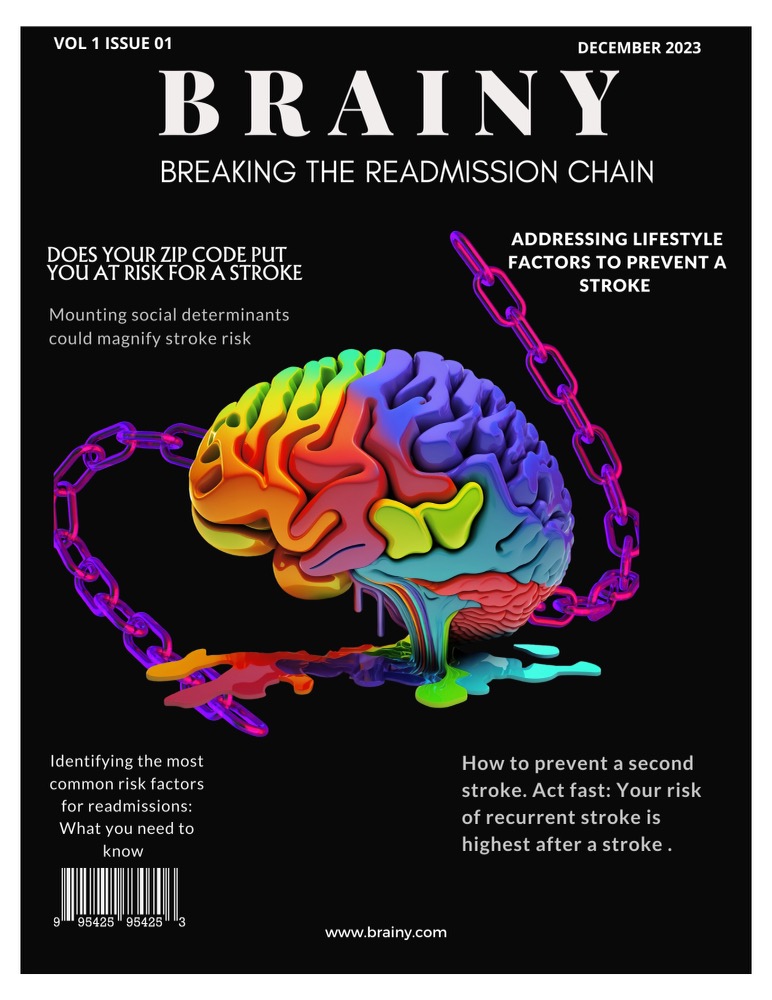
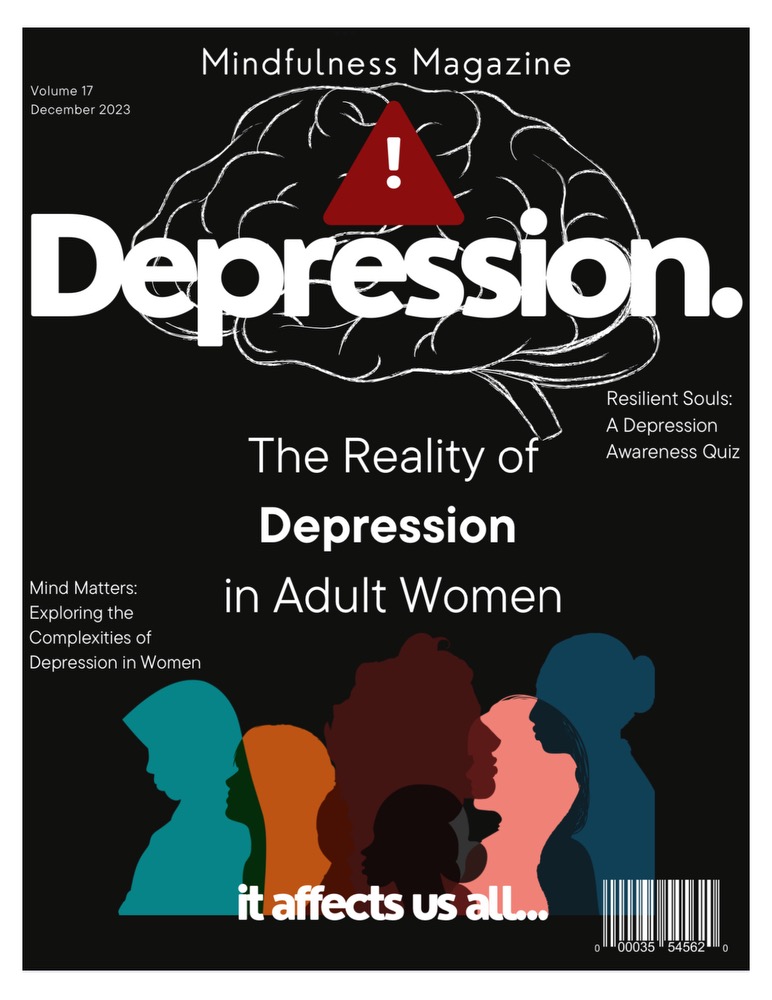
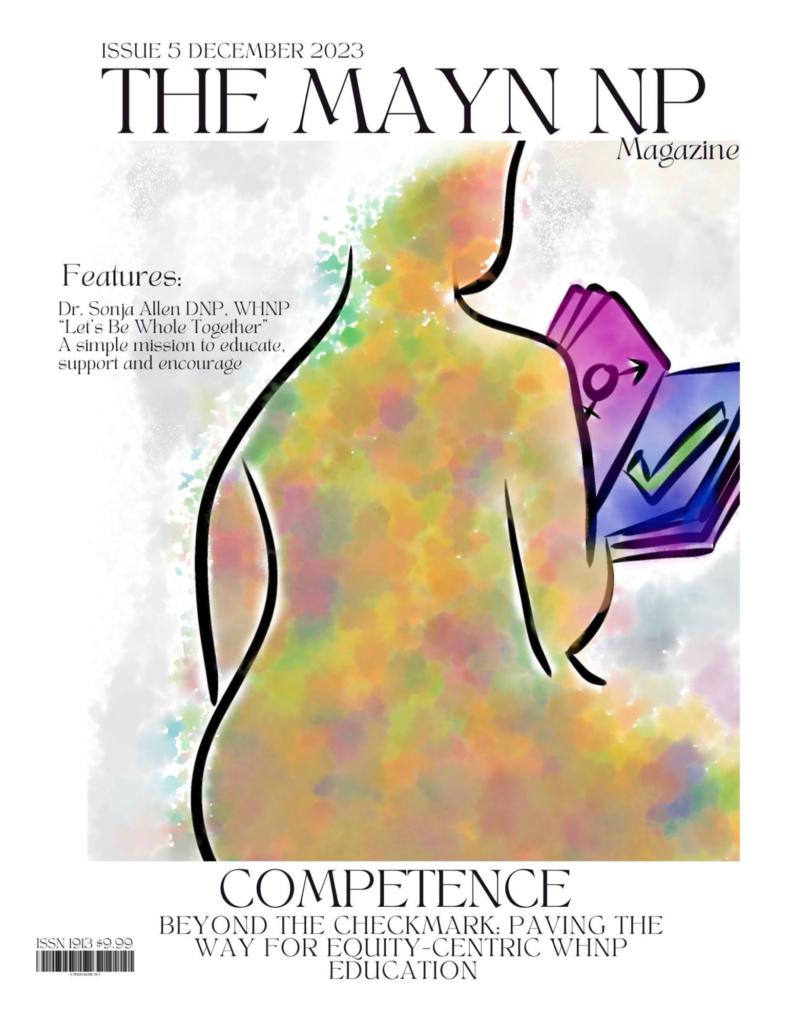
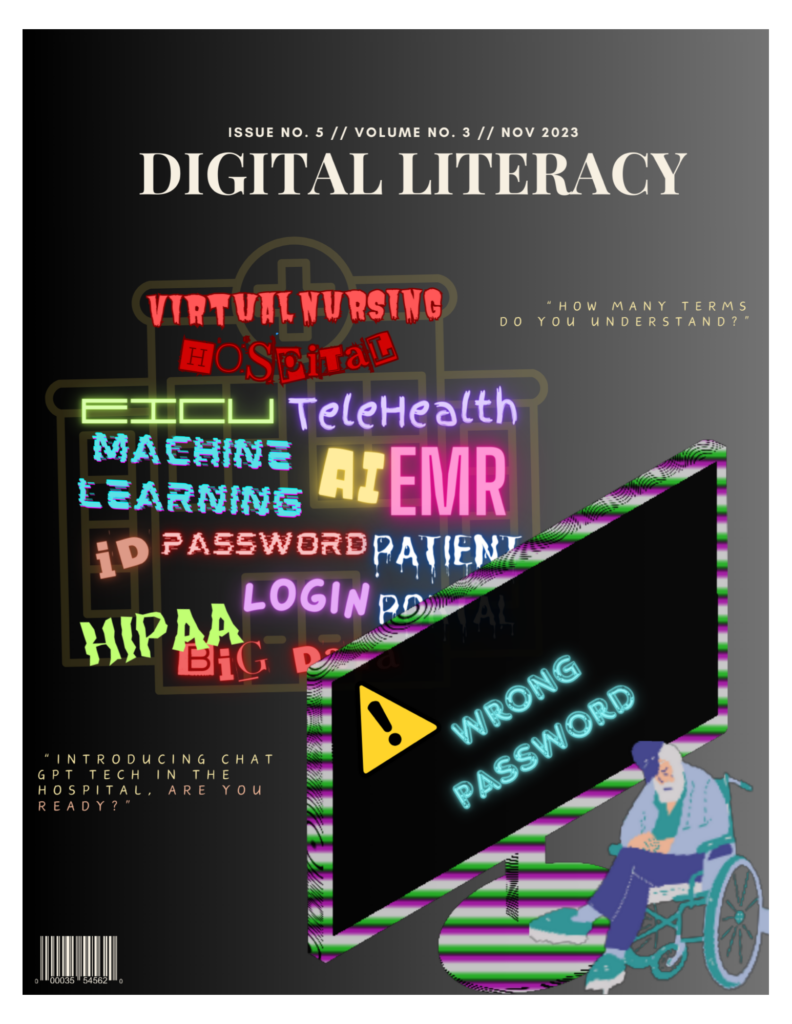
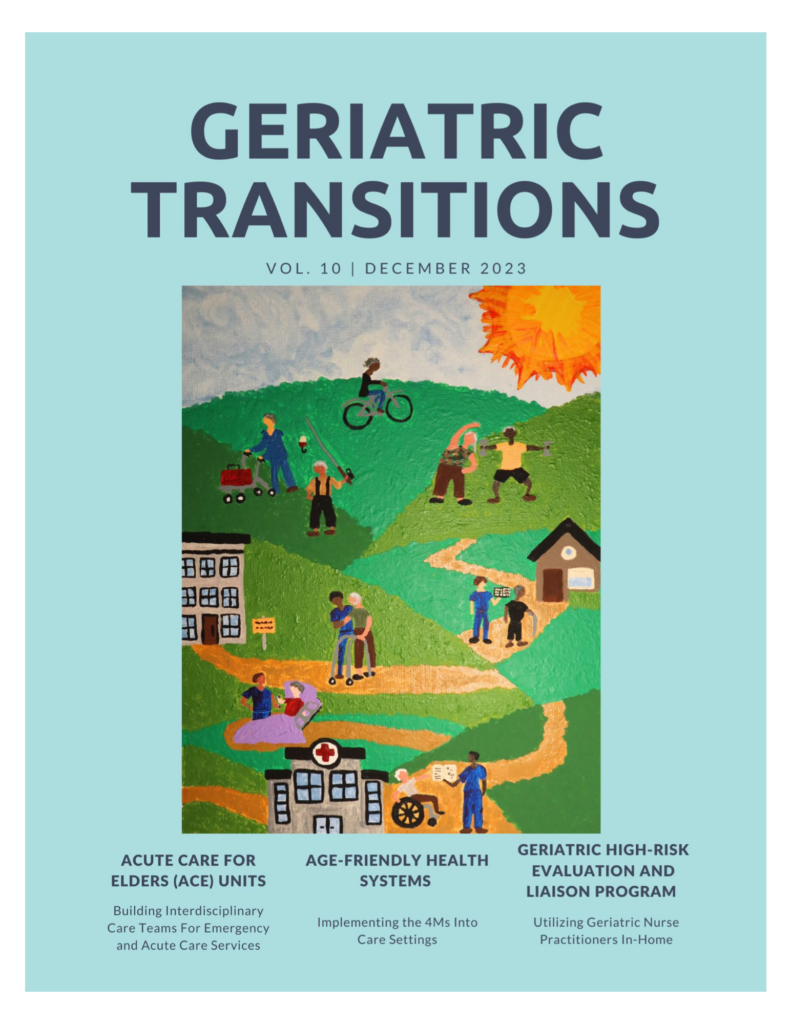
DISCUSSION
The integration of art into doctoral nursing education provides a valuable avenue for exploring social determinants of health in a multidimensional and experiential manner. By engaging with art, students are encouraged to approach complex issues creatively and critically. Additionally, this approach fosters the development of important skills such as observation, interpretation, and empathy, which are essential for effective healthcare practice. When artwork on a magazine cover effectively depicts social determinants of health, it has the power to captivate readers and serve as a thought-provoking visual cue that encourages them to consider the various factors influencing health outcomes. By visually representing key determinants such as access to healthcare, socioeconomic status, education, and environment, the artwork can spark curiosity and prompt readers to delve deeper into understanding how these factors shape overall well-being. This impactful imagery can evoke emotions, stimulate critical thinking, and inspire readers to address health disparities and advocate for positive change in society. This methodology can be adapted and applied to other health disciplines, encouraging interprofessional collaboration and fostering a holistic understanding of healthcare.
CONCLUSION
The Art and Social Justice Fellowship project provides a promising approach to incorporating art into health professions education, enhancing students’ awareness and understanding of the complex interplay between social factors and health outcomes, and potentially prompting critical conversations among individuals and communities. Further research is needed to evaluate the long-term impact of incorporating art in health profession education and to explore its potential in promoting health equity and social justice.
ACKNOWLEDGMENTS
The Emory University Art and Social Justice Fellowship provided academic and artistic guidance along with funding support for this project. The Doctor of Nursing Practice students who participated in this project were Javacia Owens (Brainy Magazine), Marissa MacDonald (Mindfulness Magazine), Sharlene Maynor (The Mayn NP Magazine), Somi Kim (Digital Literacy), and Katie Horn (Geriatric Transitions).
American Association of Colleges of Nursing. (2021). The Essentials: Core competencies for professional nursing education. Accessible online at https://www.aacnnursing.org/Portals/0/PDFs/Publications/Essentials-2021.pdf
Baah, F. O., Teitelman, A. M., & Riegel, B. (2019). Marginalization: Conceptualizing patient vulnerabilities in the framework of social determinants of health—An integrative review. Nursing inquiry, 26(1), e12268.
Nicolle, E., Britton, E., Janakiram, P., & Robichaud, P. M. (2014). Using TED Talks to teach social determinants of health: maximize the message with a modern medium. Canadian Family Physician, 60(9), 777-778.
Hamilton, J.B. (2023). Integrating a Social Determinants of Health Framework into Nursing Education. In: Hamilton, J.B., Swan, B.A., McCauley, L. (eds) Integrating a Social Determinants of Health Framework into Nursing Education . Springer, Cham. https://doi.org/10.1007/978-3-031-21347-2_2
Hamilton, J.B., Swan, B.A., McCauley, L. (2023) Integrating a Social Determinants of Health Framework into Nursing Education. (1st ed.). Springer. https://link.springer.com/book/10.1007/978-3-031-21347-2
Shawana S. Moore, PhD, DNP, APRN, WHNP-BC, PNAP, FAAN
Nell Hodgson Woodruff School of Nursing at Emory University
Director, Doctor of Nursing Practice (DNP) program
Nia Jackson, BA, MFA
Atlanta-based portrait artist
